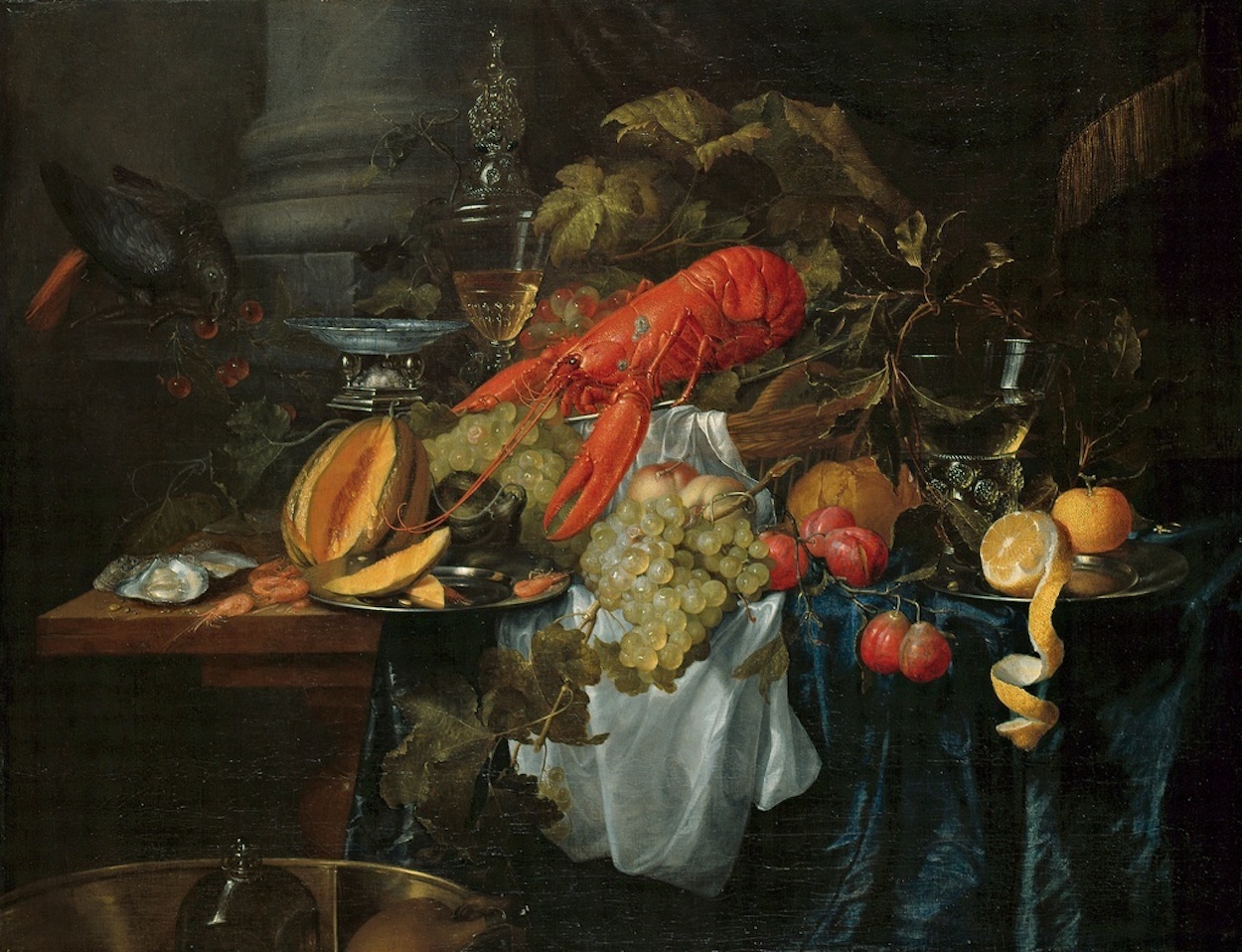Pieter de Ring (or Ryng) was a Dutch Golden Age painter, famous for his opulent, flashy still lifes or banquet pieces with fruit, a lobster, a goblet, shrimps, oysters, a rug, and Chinese porcelain. His signature is often a painted ring or with the Latinized form of his name, P.Ab.Annulo.
Still life paintings were extremely popular during the Dutch Golden Age because during the 17th century, the Netherlands experienced unprecedented wealth, scientific advancement, and creativity. In 1648, after the 80-year struggle for independence from Habsburg rule, the Dutch Republic was formally recognized in the Peace of Münster. By then, the young seafaring nation was already forging an overseas empire. Trade brought wealth and external stimuli from around the world, factors that helped foster creativity in artistic circles. This is when a distinctive style termed pronkstilleven ("ostentatious still life") evolved. They feature tables laden with fruit, dead game animals, cheeses, and flowers. The paintings represent objects available to wealthy people and sometimes include an element of fantasy.
P.S. Learn what the 17th-century pronkstilleven has to do with modern social media.
P.P.S. Did you check out our new 50 postcards set with Food & Drinks in Art? Among them you will find today's painting. Don't miss them; they are delicious! :)


 Pieter de Ring
Pieter de Ring